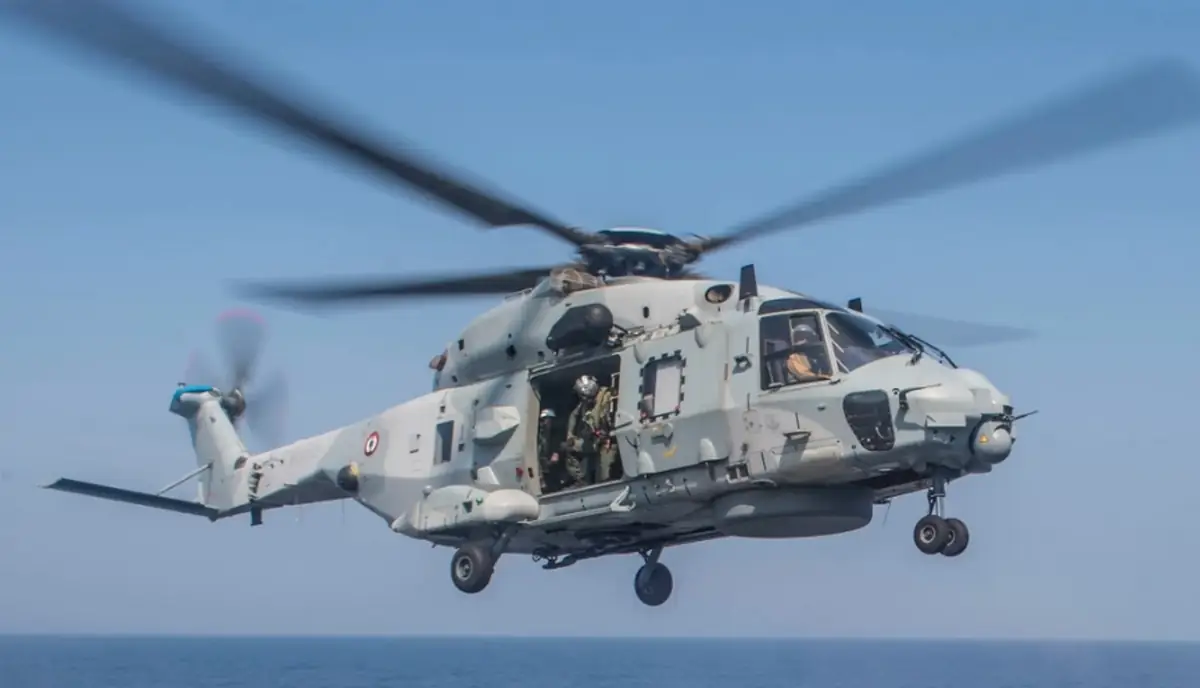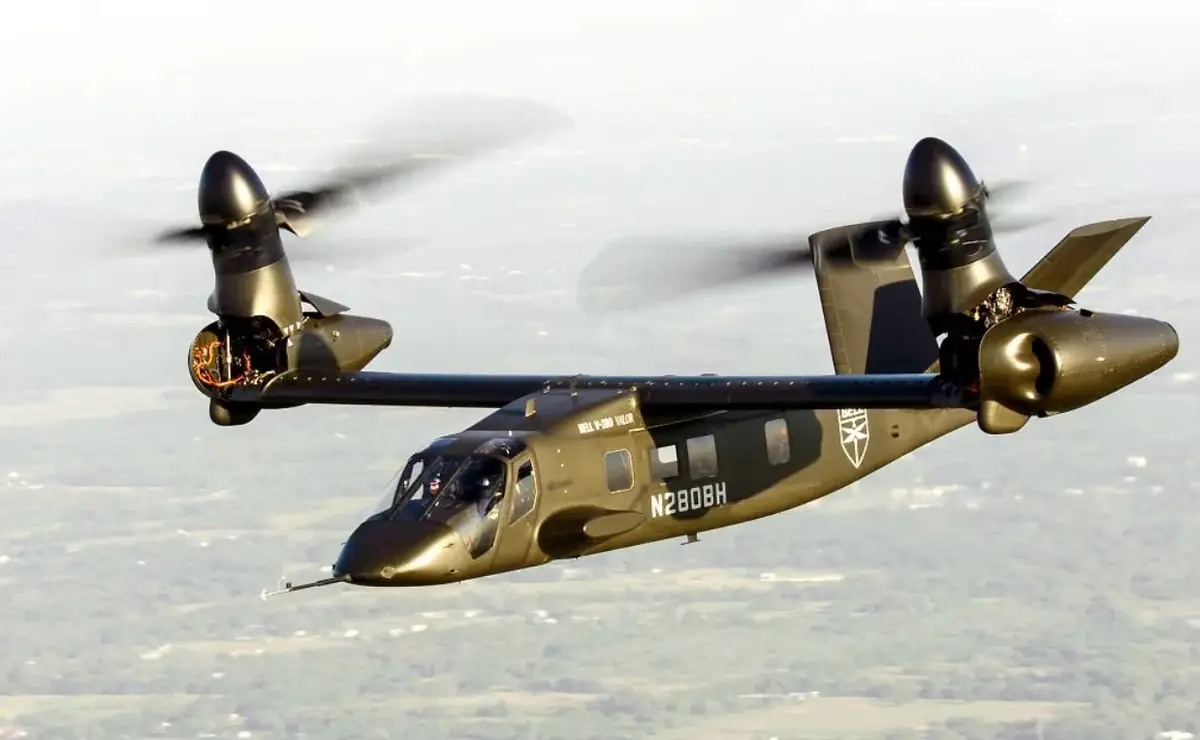NATO has selected Airbus, Leonardo, and Lockheed Martin Sikorsky to conduct conceptual studies for the next-generation helicopter.
In its effort to replace its aging helicopter fleet, NATO signed three contracts on Friday for parallel conceptual studies of a new medium-lift multi-role helicopter. The alliance aims to introduce this aircraft into service by 2035.

Airbus Helicopters, Lockheed Martin Sikorsky, and Leonardo have been awarded 13-month contracts to conduct these studies as part of NATO’s Next-Generation Rotorcraft Capability (NGRC) program.
The goal of this research, known as Study #5, is to “provide a broad range of potential concepts” to assist participating countries in selecting the type of vertical lift platform they wish to have in the future. The NGRC program, which started in 2022, includes France, Germany, Greece, Italy, the Netherlands, the United Kingdom, and Canada. Initially, $28.98 million was allocated to determine the future of their helicopter fleets. The United States and Spain are currently participating as observers.
“These contracts will allow us to explore potential platform concepts aimed at defining and utilizing advanced technologies to provide operational capabilities and forces,” stated the NATO Support and Procurement Agency (NSPA), the Alliance’s procurement arm. “They will also seek innovations in digital design and development, advanced materials, and manufacturing.”

“At the same time, these three contractors will provide valuable independent perspectives on potential integrated platform concepts that may meet the NGRC requirements, aiming to identify and utilize advanced technologies to deliver operational and support capabilities for NGRC, as well as seek innovations in digital design and development processes, advanced materials, and manufacturing,” stated the NSPA.
“NATO notes that a significant number of medium multi-role assets currently in service with Alliance members will reach the end of their life cycle between 2035 and 2040 and beyond, necessitating their replacement. Currently, the Alliance operates AW101, UH-60 Black Hawk, Super Puma, and NH90 aircraft. ‘All these existing fleets are based on designs developed in the last century,’ NATO stated. ‘The goal of the NGRC initiative is to meet these future needs in a timely and cost-effective manner while leveraging a wide range of the latest advancements in technology, manufacturing methods, and operational concepts.'”

At this stage of the process, NATO remains agnostic about whether to choose a traditional helicopter or an unconventional rotorcraft. However, the Alliance has many “required attributes” that the winning project must meet, according to the procurement documentation.
Among other criteria, the cost per flight must not exceed $38.05 million, and the optimal cost per flight hour should be $5,400, but no more than $10,870, based on 2021 prices. Additionally, the aircraft must be equipped with a crew and have the capability for remote piloting. They should perform a wide range of missions and be able to quickly switch between configurations. Future helicopters must have an optimal cruising speed of 220 km/h or more, and be capable of interacting with drones, launching and recovering smaller drones, and managing drone swarms.

Airbus is collaborating with Collins Aerospace, Raytheon, and MBDA, which are part of RTX, on a concept that is likely based on the innovative high-speed helicopter Rapid And Cost-Effective Rotorcraft (RACER). This design replaces the traditional tail rotor with a pair of propellers on each side of the aircraft.
RACER is a civilian aircraft funded by the European Commission’s Clean Sky program, and Airbus does not plan to convert it into a military platform. However, the company intends to apply the lessons learned from this project to its proposal for NATO. Airbus stated that the hybrid concept might be adapted for military use after extensive research. “Our proposal will be based on a next-generation helicopter (NGR). We believe this aircraft should be capable of flying fast and far,” the company said.

It’s worth noting that the concept art provided by Airbus features a traditional rotor combined with propellers mounted on the rear of the aircraft, along with a tail rotor. The design also includes hardpoints for missiles and other stores along the fuselage. Additionally, the visualization includes four armed drones escorting the aircraft. Lockheed Martin Sikorsky’s concept will be based on their Sikorsky X2 technology demonstrators with rigid rotor blades, incorporating lessons learned from the development of the S-97 Raider.
“Thanks to over $1 billion in investment and 15 years of testing and flight experience, Sikorsky’s X2 helicopters demonstrate mission readiness,” said Andy Adams, Vice President of Sikorsky Future Vertical Lift, in his statement. “The rigorous flight test program of the S-97 Raider technology demonstrator continues to provide crucial data that correlates with the virtual prototype, allowing Sikorsky to experiment with unique capabilities that X2 technology may offer.”
Leonardo, in collaboration with Bell, will present a concept featuring a tilting rotor. Bell has worked with Boeing on the V-22 Osprey, which, despite numerous issues, has remained in service with the Air Force, Navy, and Marine Corps for a long time. Bell’s V-280 Valor has accumulated hundreds of flight hours during testing and has achieved speeds of over 280 knots, which is the speed it was designed for and is reflected in its name.
“The requirements set forth under the NGRC initiative call for capabilities best provided by high-speed helicopter architectures, including high speed and long range,” Bell said in its statement. “Our proposal will be developed based on advanced research into the tiltrotor concept, leveraging the solid and established experience of the Leonardo consortium team. These studies will benefit from the collaboration among key industry leaders united in our consortium, including Bell, General Electric, Hensoldt, Leonardo DRS, MBDA Italia, NLR, Rolls Royce, and Safran. The team aims to offer strong conceptual solutions to meet the operational requirements expressed by NATO.”
The contract under NATO’s Study #5 program has breathed new life into the aircraft developed by Lockheed Martin Sikorsky.
Source: TWZ








